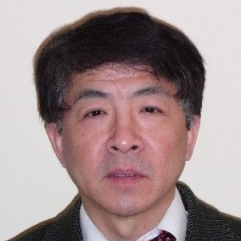Modelling Flow, Water Quality, and Sediment Transport Processes in Coastal, Estuarine, and Inland Waters
A special issue of Water (ISSN 2073-4441). This special issue belongs to the section "Water Erosion and Sediment Transport".
Deadline for manuscript submissions: closed (30 June 2020) | Viewed by 36152
Special Issue Editors
Interests: computational hydro-environmental modelling; laboratory hydraulic modelling; hydrodynamic processes; water quality; sediment transport and morphology; faecal indicator organisms; contaminant fate and transport; coastal, estuarine and river restoration; flood risk assessment; quantitative health risk assessment; global water security
Interests: hydro-environmental modelling; flood risk management; extreme flood modeling; evacuation planning; nature-based solutions; digital twins; pollution modeling
Special Issues, Collections and Topics in MDPI journals
Interests: computational hydro-environmental modelling; laboratory hydraulic modelling; river flow and sediment transport processes; impacts of large dams on water tempreture; contaminant fate and transport; coastal and estuarine dynamics
Special Issue Information
Dear Colleagues,
Over the past few decades, there has been increasing concern about global water security, particularly with regard to flow and water quality processes in rivers, estuaries, and coastal waters. The impact of climate change has led to a higher number of floods and droughts, and population growth and urbanisation have led to growing demand for water, food, and energy, leading to increasing diffuse and point source pollution. Increasing global wealth has also led to changes in food habits and demand for commodities, leading to a rise in virtual water demand and, as a consequence, increasing pollution and more challenging hydro-ecosystems management. To address these challenges, together with the importance of complying with ever-growing regulatory standards (such as the EU Bathing Water Directive), an improved understanding of hydrodynamics, water quality (including contaminents of emerging concern), sediment transport, and morphological processes is required together with improved predictive models, associated with new numerical schemes, increasing field data, large-scale laboratory data, higher-performance computing facilities and improved bathymetric data and visual representation, etc. This Special Issue aims to bring together recent pure and applied research on a wide range of topics related to flow and water quality processes in modelling river and coastal basin systems from catchments to the coast. We encourage submissions on: Hydrodynamic processes (including: Roughness, turbulence, data acquisition and analysis, boundary conditions, etc.), particularly for extreme events; water quality processes (including: Diffusion and dispersion, dynamic decay, bed and surface interactions, constituent interactions (such as nutrients), field data and analysis, etc.); sediment transport and morphological processes (including: Cohesive and noncohesive sediments, adsorption and desorption water quality constituents (such as faecal indicator organisms—FIOs) and trace metals, flux of water quality indicators in the oxic and anoxic sediment layers, and transport of FIOs via the sediments; rapid sediment flux reduction and water temperature changes (due to building large dams and conservation), etc. We especially welcome submissions that explore the extension of these processes to predict health risk assessments, such as gastroentiritis, for the river, estuarine, and coastal water columns.
Prof. Roger Falconer
Dr. Reza Ahmadian
Prof. Binliang Lin
Guest Editors
Manuscript Submission Information
Manuscripts should be submitted online at www.mdpi.com by registering and logging in to this website. Once you are registered, click here to go to the submission form. Manuscripts can be submitted until the deadline. All submissions that pass pre-check are peer-reviewed. Accepted papers will be published continuously in the journal (as soon as accepted) and will be listed together on the special issue website. Research articles, review articles as well as short communications are invited. For planned papers, a title and short abstract (about 100 words) can be sent to the Editorial Office for announcement on this website.
Submitted manuscripts should not have been published previously, nor be under consideration for publication elsewhere (except conference proceedings papers). All manuscripts are thoroughly refereed through a single-blind peer-review process. A guide for authors and other relevant information for submission of manuscripts is available on the Instructions for Authors page. Water is an international peer-reviewed open access semimonthly journal published by MDPI.
Please visit the Instructions for Authors page before submitting a manuscript. The Article Processing Charge (APC) for publication in this open access journal is 2600 CHF (Swiss Francs). Submitted papers should be well formatted and use good English. Authors may use MDPI's English editing service prior to publication or during author revisions.
Keywords
- Computational fluid dynamics
- Coastal, estuarine, and river dynamics
- Laboratory modelling and experimental studies
- Hydrodynamic processes
- Water quality processes
- Sediment transport and morphology
- Contaminant fate and transport
- Field data and analysis
- Data-driven modelling
- Health risk assessment







